If you’re craving an adventure that takes you beyond the well-trodden paths of Nepal’s Everest or Annapurna circuits, the Kanchenjunga Circuit Trek offers a rare glimpse into the unspoiled wilderness of the eastern Himalayas. Priced at around $2,560 per person for roughly three weeks of trekking, this journey takes you from Kathmandu to remote Nepali villages and into some of the most breathtaking mountain scenery anywhere on Earth—including two visits to both North and South Base Camps of the mighty Kanchenjunga.
What we love most about this trek is its less crowded trail, meaning you’ll enjoy peace and solitude in some of the Himalayas’ most pristine spots. The guides are experienced, friendly, and committed to making your adventure memorable. Another highlight is the chance to see rare wildlife, including the possibility of spotting Red Pandas, Blue Sheep, and Snow Leopards—a treat for wildlife enthusiasts.
A potential consideration is the long drives involved, which can be tiring, especially after a few days of trekking. The itinerary also involves high-altitude passes and remote villages, so it’s best suited for travelers with good physical fitness and a sense of adventure. If you’re looking for a trek that’s off the beaten path, offers authentic experience, and rewards you with stunning mountain vistas, this is a trip worth considering.
Who is this trek for?
It’s perfect for those who want to escape crowds and explore less commercialized trails. If you’re comfortable with multi-day hikes in rugged terrain and seek a more authentic Himalayan experience, this trek will suit you well. On top of that, travelers who appreciate wildlife sightings and scenic diversity—from lush forests to high-altitude glaciers—will find this trek particularly rewarding.
Key Points
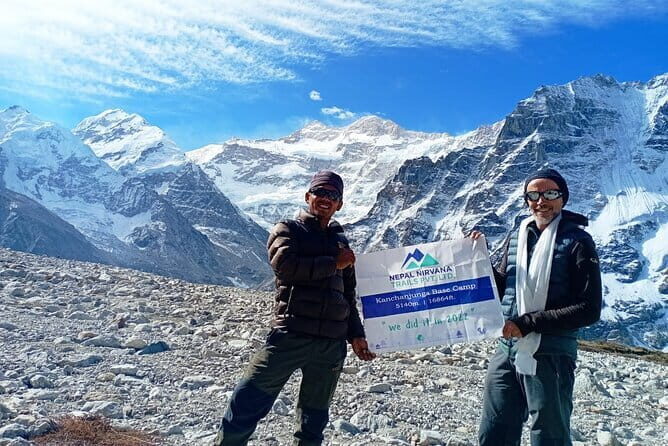
- Less Crowded Trails: Since the route is newly established, you’ll trek through quieter villages with fewer travelers.
- Spectacular Mountain Views: You get multiple sightings of Mt. Kanchenjunga from both North and South Base Camps.
- Authentic Experience: Little-developed villages along the trail provide a genuine glimpse into traditional Nepali life.
- Expert Guides: The team is experienced, friendly, and knowledgeable, ensuring safety and rich insights.
- Wildlife Opportunities: Possible sightings of Red Pandas, Blue Sheep, and Snow Leopards add an exciting wildlife dimension.
- Challenging Yet Rewarding: Involves high passes, remote terrain, and long days, ideal for physically prepared trekkers.
Love the outdoors? Here are other hiking experiences we've covered in Kathmandu
An In-Depth Look at the Kanchenjunga Circuit Trek
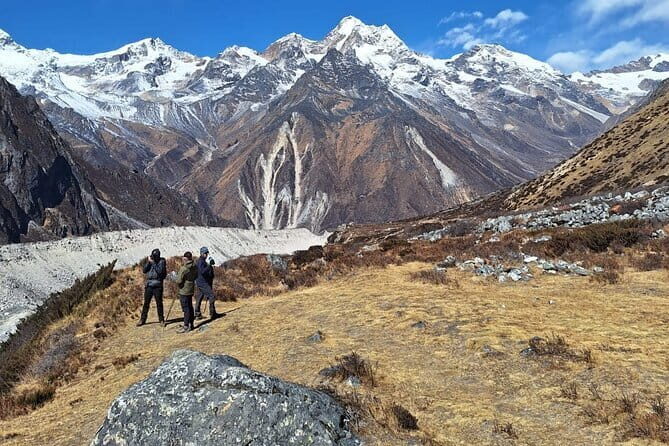
The Basics: Location, Duration, and Cost
This 19-day trek begins in Kathmandu, with an overall cost around $2,560, which covers permits, accommodations, most meals, guides, and internal flights. It’s a significant investment, but one that offers exclusive access to a less explored, pristine region of Nepal. The journey is designed for those seeking an authentic Himalayan adventure away from heavily crowded trails.
Day-by-Day Breakdown of the Itinerary
Day 1-2: Kathmandu
Your adventure kicks off in the vibrant streets of Thamel, where you can soak in Nepal’s bustling atmosphere and prepare for the trek. Guided by friendly experts, you’ll handle permits and gear checks, and may choose to explore UNESCO World Heritage sites. This initial stage ensures you’re well-prepared, both mentally and physically.
Day 3-4: Fly to Taplejung and Drive to Sekathum
The flight from Kathmandu to Bhadrapur is brief, but the real journey begins with a long, scenic jeep ride through tea plantations and hill villages. The drive to Sekathum (around 12 hours) is a highlight, offering glimpses of local life and stunning landscapes along the Tamor River.
Day 5-6: Trek to Amjilosa and Gyabla
Starting your trek, you’ll ascend along the Ghunsa Khola, crossing bridges over rushing rivers, with lush forests and waterfalls providing continuous natural beauty. The trail is challenging but rewarding, with chances to spot wildlife or simply enjoy the serenity of Nepali village life.
Day 7-8: Ghunsa and Khambachen
These days are crucial for acclimatization, giving your body time to adjust to higher elevations. Ghunsa village is a charming settlement with traditional houses, offering a glimpse into Himalayan village life. The ascent to Khambachen involves passing landslide zones and glaciers, marking the beginning of the high-altitude adventure.
Day 9-10: Lhonak and Kanchenjunga North Base Camp
Lhonak sits at the edge of the glacial terrain, accessible via a tough but scenic route. The highlight here is the trek to North Base Camp (Pang Pema), where panoramic views of Kanchenjunga’s towering peaks unfold, rewarding the effort with unforgettable scenery.
Day 11-12: South Base Camp and Return
Descending to South Base Camp, you get a different perspective of the mountain and surrounding peaks. The trek back retraces your steps through rocky trails and forested slopes, with many reviewers noting the variety of landscapes and the solitude their favorite aspects.
Day 13-16: Cross High Passes and Explore Yalung Glacier
This section involves high-altitude passes like Sinion La and Mirgin La, each offering spectacular views of Everest, Makalu, and other giants. The trek culminates at Yalung Glacier, where you can see the three summits of Kanchenjunga up close from Oktang Viewpoint. These days demand stamina but deliver some of the most dramatic vistas in Nepal.
Day 17-19: Descent via Yamphudin and Kanyam
Descending out of the mountains, you’ll pass through Rhododendron forests and lush valleys, returning to the lowlands where tea gardens and warmer climate await. The final drive and flight back to Kathmandu wrap up your adventure, leaving you with memories of remote villages, towering peaks, and wilderness untouched by mass tourism.
Authenticity and Local Life
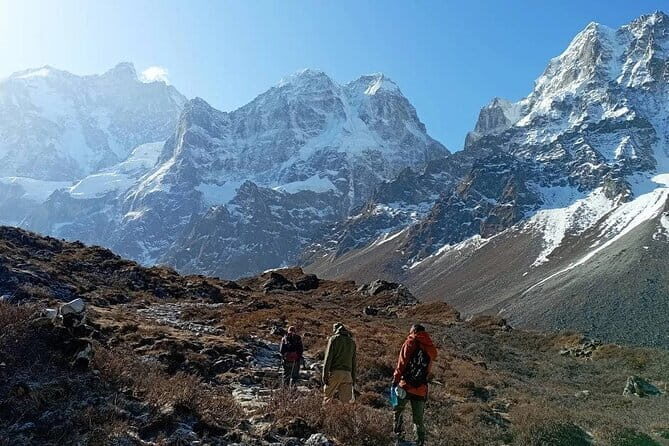
One of the standout features of this trek is its less commercialized nature. Unlike more popular routes, villages along the trail haven’t fully developed for mass tourism, which means you experience genuine Nepali culture, simple guesthouses, and a slower pace. Trekkers often comment on the friendly villagers and the chance to see traditional lifestyles, which can be rare in heavily touristed areas.
Wildlife and Unique Encounters
If luck is on your side, you might spot Red Pandas in the dense forests, a rare treat for wildlife watchers. The guides are well-versed in local flora and fauna, making even passing sightings or signs of wildlife interesting educational moments. The possibility of seeing Blue Sheep and Snow Leopards adds an exciting dimension for those interested in Himalayan wildlife.
Comfort and Logistics
Accommodations are primarily tea-house style, offering basic but comfortable beds and hearty meals. The guides organize most meals, which are simple but nourishing—think dal bhat (lentils with rice), momos, and seasonal vegetables. The added costs like tips and personal expenses are not included, so budget accordingly.
Transportation within Nepal is well-organized: flights, jeep rides, and shared vehicles make the long travel segments manageable. The guides’ experience ensures smooth logistics, even in the more remote sections where road access is limited.
The Value of the Experience
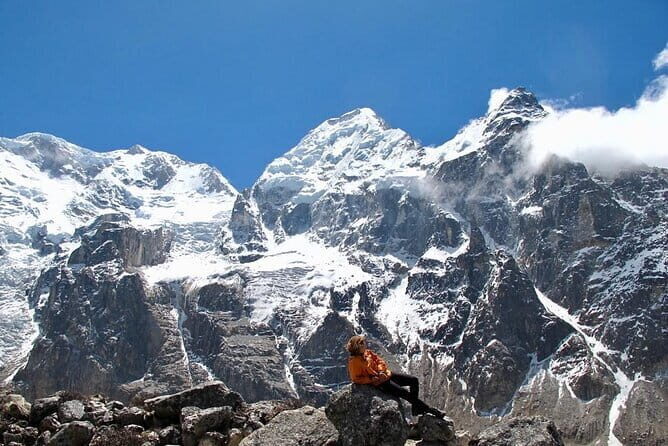
While the price tag might seem steep compared to more popular treks, the value lies in the exclusivity, scenery, and authentic experience. You’re paying for the guides’ expertise, permits, internal flights, and accommodations—all of which are essential for a smooth journey in such remote terrain.
Travelers who’ve completed this trek rave about the stunning mountain vistas—especially the views of Kanchenjunga from both base camps. Many reviews mention the friendly and knowledgeable guides who go the extra mile, making the journey not just physically challenging but also culturally enriching.
Practical Tips for Potential Trekkers
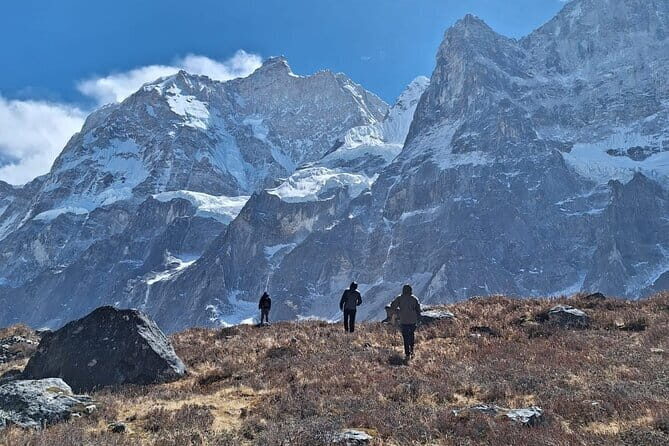
- Physical Fitness: The trek involves high passes and long days, so good fitness levels are essential.
- Altitude Preparation: Acclimatization days are built into the itinerary, but be prepared for high elevations.
- Gear: Basic trekking gear is recommended; guides can advise on gear rental options.
- Weather: Expect chilly nights at high altitude and variable conditions—pack layers.
- Wildlife Watching: Bring binoculars if you’re keen on spotting elusive animals like snow leopards.
- Duration: The trek is lengthy but offers unparalleled solitude and scenic diversity.
The Sum Up

The Kanchenjunga Circuit Trek is for adventurous souls who want to escape crowded trails and step into pristine Himalayan wilderness. It offers spectacular mountain views, chances for wildlife sightings, and a chance to experience the authentic lives of Nepali villagers. The guides’ expertise and the well-organized logistics help turn what can be a physically demanding journey into a safe and memorable adventure.
If you’re looking for a trek that combines off-the-beaten-path exploration with stunning vistas of some of the tallest mountains on Earth, then this could be your ideal Himalayan escape. Expect a journey filled with natural beauty, cultural authenticity, and a sense of achievement that only comes from conquering remote high-altitude passes.
FAQ
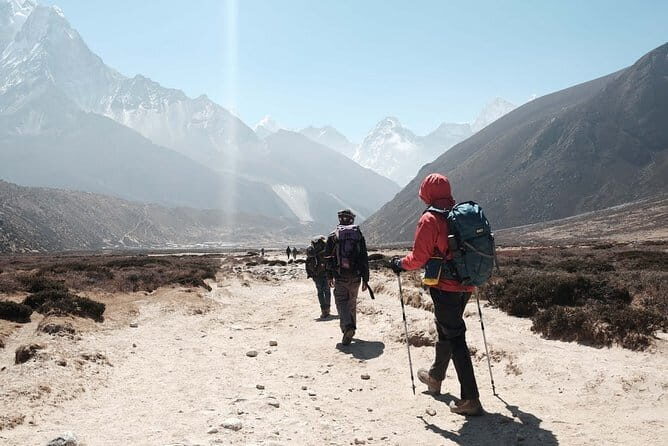
Is this trek suitable for beginners?
Given the high altitude, long days, and rugged terrain, it’s best suited for trekkers with good physical fitness and some prior trekking experience.
What is included in the price?
Permits, accommodations during the trek, most meals, local transportation, guides, and internal flights are included.
Are there any notable challenges?
Yes, the high passes, altitude, and remote conditions may be tough for some. Long drives can also be tiring.
How are the accommodations during the trek?
Primarily tea-house style, basic but comfortable, with communal dining and simple rooms.
What wildlife might I see?
Possibilities include Red Pandas, Blue Sheep, and Snow Leopards—rare but exciting wildlife encounters.
What are the best months to undertake this trek?
Most reviews and itineraries favor the spring (March-May) and autumn (September-November) months for stable weather and clear mountain views.
Do I need special gear?
A good pair of trekking boots, layered clothing, and essentials like a sleeping bag are recommended. Guides can advise on gear rentals.
How physically demanding is this trek?
It’s challenging, especially at high altitude and passes, but with proper preparation, most fit trekkers can manage it.
What is the scenery like?
From lush forests and river valleys to high glacier passes and towering peaks, the scenery is diverse and breathtaking.
Can I customize the itinerary?
It’s best to follow the planned itinerary for safety and logistical reasons, but guides are experienced and flexible within reason.
If you’re ready for a Himalayan adventure that’s authentic, less crowded, and packed with unforgettable sights, the Kanchenjunga Circuit Trek could be just what you need. Prepare to be amazed by Nepal’s wild side and the towering presence of Kanchenjunga—one of the world’s most magnificent mountains.
More Hiking & Trekking Tours in Kathmandu
More Tour Reviews in Kathmandu
- Half Day: Private Bhaktapur Durbar Square Sightseeing Tour
- Nagarkot: Sunrise Tour of Nagarkot from Kathmandu
- Kathmandu: Chitlang Day Tour, Wine Tasting and Short Hike
- Bhaktapur darbar, Patan Darbar square & Changu Narayan in 1 day
- Kathmandu: Chandragiri Cable Car Half Day Tour
- Kathmandu: Full Day 7 UNESCO Tour with Lunch – Private/Group
More Kathmandu experiences we've covered
- Half Day: Private Bhaktapur Durbar Square Sightseeing Tour
- Nagarkot: Sunrise Tour of Nagarkot from Kathmandu
- Kathmandu: Chitlang Day Tour, Wine Tasting and Short Hike
- Bhaktapur darbar, Patan Darbar square & Changu Narayan in 1 day
- Kathmandu: Chandragiri Cable Car Half Day Tour
- Kathmandu: Full Day 7 UNESCO Tour with Lunch – Private/Group
- Cook and Dine with a Local family
- Bhaktapur Durbar Square and Boudhanath Stupa
- 3 Hours Walking Tour at Patan
- Private Kathmandu Valley Sightseeing Tour Including Lunch
- Smells of Kathmandu Walking Day Tour
- From Kathmandu: 5-Day Everest View Trek
